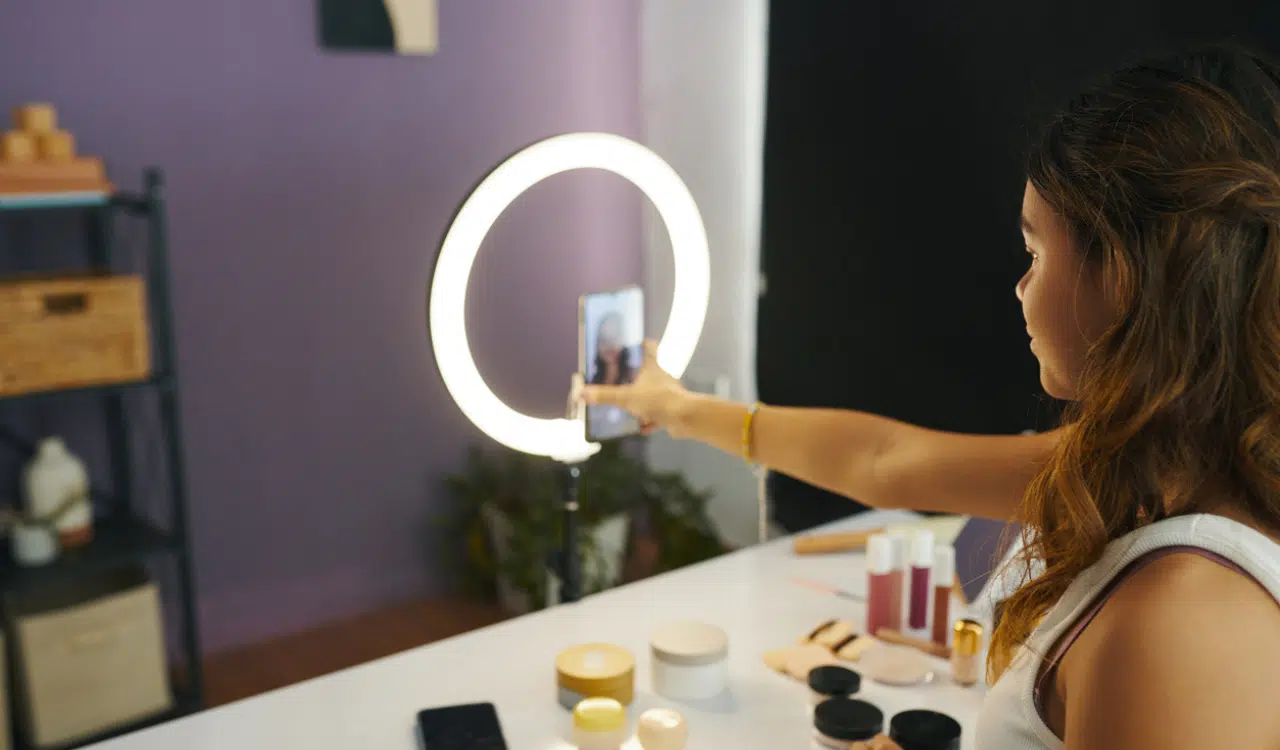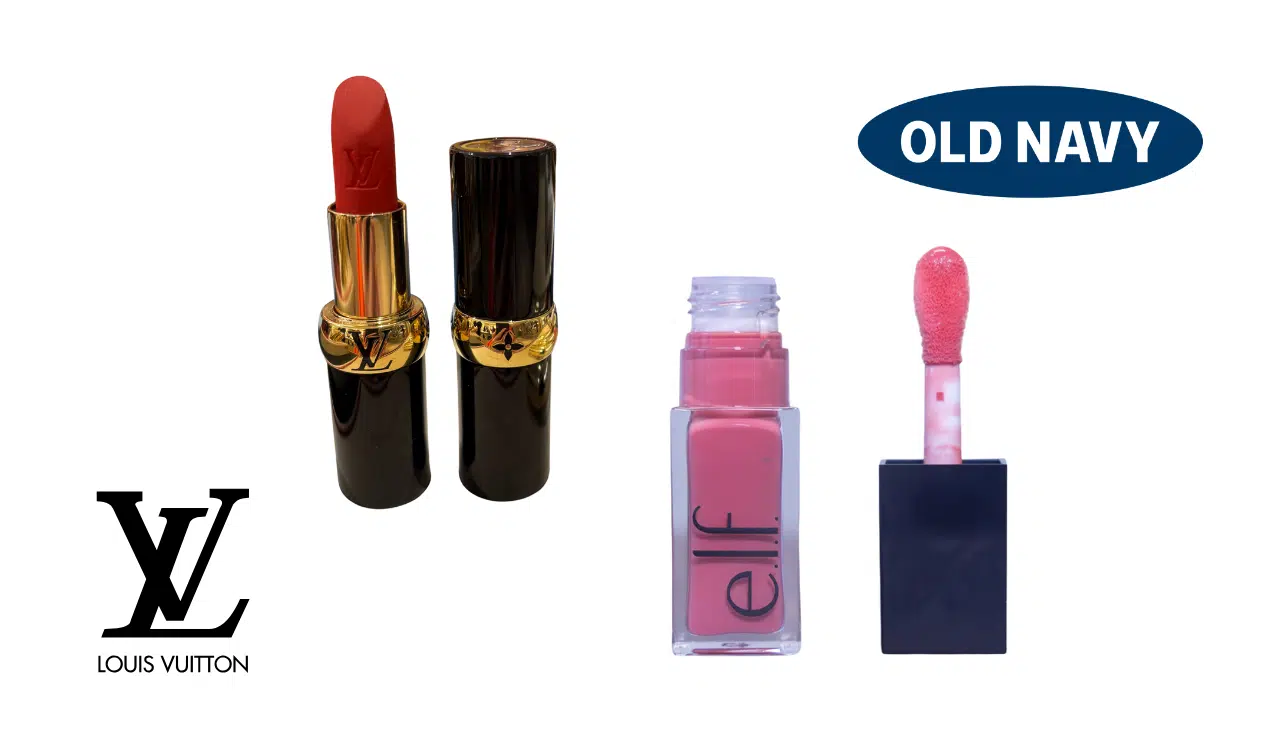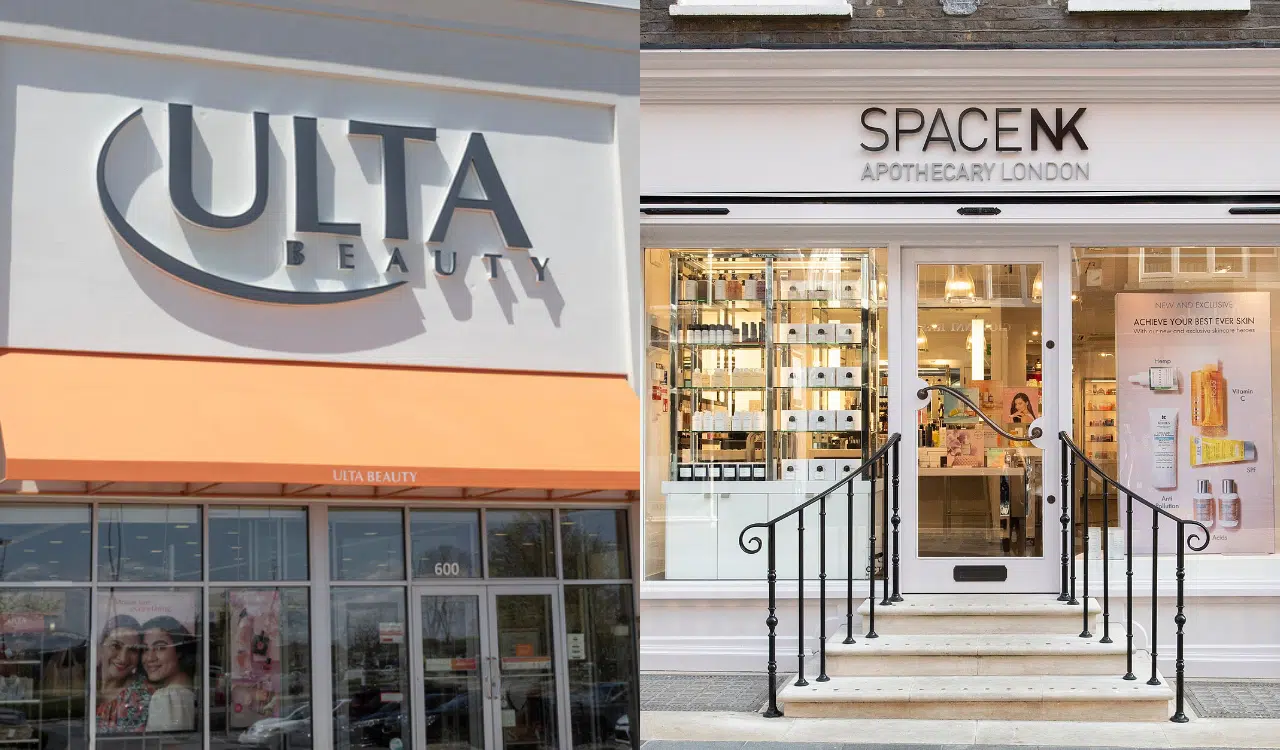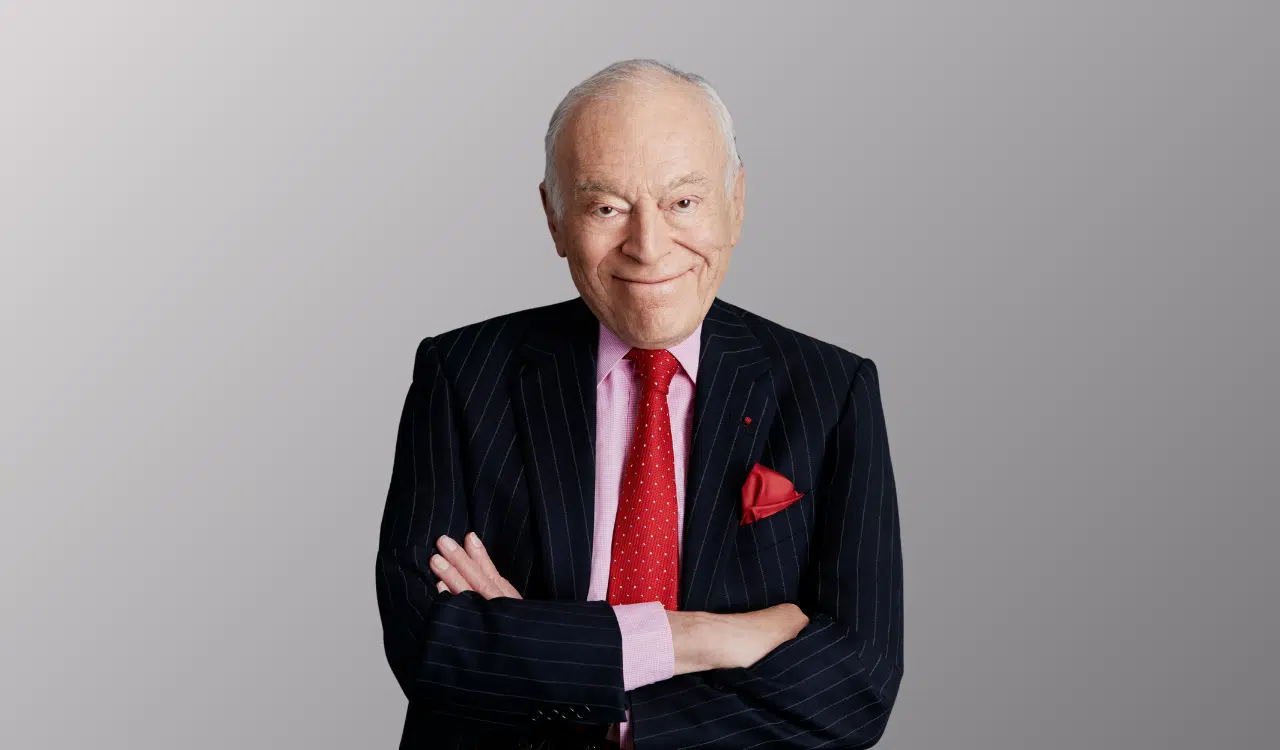Of all the people to lead me down the Big Beauty AI rabbit hole, I wasn’t expecting Malcolm Gladwell. But then he swung by the global IBM Research headquarters in Yorktown Heights, New York, to de-brief with two major L’Oréal honchos – Matthieu Cassier and Gabriel Bertoli – about the 1.5-year-old AI collaboration between the two corporate giants, and then it was off to the races.
In its new ad campaign, “The Code,” Dove explores the explosive impact of AI in shaping perception and estimates that up to a whopping 90 percent of the content consumers currently engage with is generated by AI. And with AI-generated imagery in particular, the depiction of beauty is obviously skewed toward an unobtainable level of perfection. Dove is renewing its vow to champion real beauty, with a commitment to never use AI to create or distort women’s images.
AI’s Beauty Play
Cassier and Bertoli, both long-time L’Oréal guys, hold similar sounding but slightly different titles. Cassier is VP Research & Innovation, Chief Transformation & Digital Officer. Bertoli is Chief Digital Transformation Officer, Research & Innovation, and is also an AI professor at the Paris-based ESCP Business School. In other words, Cassier and Bertoli already had their fingers on the pulse before Gladwell came knocking for the latest episode of the podcast Smart Talks With IBM.
Dubbed “L’Oréal and IBM: AI-Powered Beauty,“ the episode is a fun, sometimes playful peek into the way the world’s biggest beauty company has been harnessing the power of AI. As the three men toggle between serious business and bravely applying long-wearing Maybelline hits like Vinyl Ink lipstick and Superstay 24-hour compact powder foundation to their faces, it becomes instantly clear that legacy beauty companies have a massive leg up on even the hottest digital-native brands.
The legacy superpower? Data. Decades and decades of information about not only their proprietary product formulations and the ingredients that fuel them, but their also customers as well. Sure, Rhode may gotten itself acquired for a cool billion, but it hasn’t been in business for 116 years like L’Oréal.
Eschewing One-Size-Fits-All AI
Of course, L’Oréal is not alone in recognizing that treasure troves of company-specific info bytes can be paired with powerful AI tools to shape future business. Take Estée Lauder Cos. for example. Although it’s pairing with Microsoft and not IBM, it too is deploying AI to shorten the timeline of getting personalized, customer-specific products to market, as well as streamlining internal ops.
Though she recently stepped down from her roles as Chief Data Officer and Executive VP Enterprise Marketing, Jane Lauder was a major catalyst in helping EL Cos. leverage the power of AI. At a conference staged last year by The Next Web — “Beyond Skin Deep: AI’s Impact on Beauty and Bias” — Lauder told the crowd that while she knows people don’t readily associate the 75-year-old EL Cos. with technology, in fact it drives every product it makes. “Beauty is one of the most personal [consumer goods] categories,” she said. “And personalization is driven by data. That’s how we bring AI into this whole equation.”
After studying how other industries work with AI, Lauder developed what she calls “The 5 Ts” – five takeaways that can help companies integrate the constantly changing technology:
- Create an internal task force to ensure all employees stay on the same page in terms of AI use
- Ensure trust that all company data remains secure and protected
- Hire the most AI-savvy talent
- Train senior leaders so they know the right questions to ask
- Trial, i.e., keep iterating with AI until the desired outcome is achieved
For massive global beauty conglomerates, off-the-shelf AI offerings won’t cut it. They demand – and can pay for – custom technology shaped by their own unique needs.
Fulfilling Both Current and Future Needs
In an extremely in-depth January 2025 article on its website, McKinsey & Company guesstimated that GenAI could bolster the global economy by up to $10 billion through adaptation by the beauty industry alone. While the research firm didn’t pinpoint a timeframe, no matter when it happens, it’s still a lot of coin, even for a consumer goods sector that’s already expected to garner approximately $677 billion this year.
Dividing AI-fluent beauty companies into two camps – “Takers” that buy off-the-shelf technology and “Shapers” that bake in their own proprietary data – McKinsey rattled off multiple ways in which AI can change the game. Here are just a few:
- Trend identification and social listening
- Micro-segmentation based on consumer data
- Summarized customer information for retail sales associates
- Creative content versioning
- Media optimization
- Rapid package-concept development
- Store design and planning
- Code automation
As for internal ops, McKinsey says AI can help with all of that, including talent search, recruiting, performance analytics, onboarding and sales and customer support.
Core Ways Beauty Consumers Are Tapping AI Tools
When it comes to product purchases, there are three main ways beauty retailers are already deploying AI: virtual try on, skin analysis, and product personalization.
- Virtual Try On: Since it’s largely confined to makeup shade selection, virtual try on has its limitations. But for anyone who has wasted hard-earned cash on a lipstick or blush that looked great in the clear package or box shade swatch, but god awful in real life, having the option to “try before you buy” has its benefits.
Of course, consumers can’t assess texture via virtual try on, or how well a particular makeup product performs. But they can at least get a sense of whether a color works with their skin tone. And in doing so, possibly save themselves a few bucks. Not surprisingly, Gen Zers, who are no fans of in-store “shade-matching” by beauty advisors, are especially keen on virtual try on.
- Skin Analysis: According to Precedence Research, the global AI skin analysis market is sitting at roughly $1.8 billion right now and is expected to jump to a not inconsiderable $7 billion by 2034. Evidently, AI skin analysis helps consumers not only assess the condition of their complexion, but also serves up product recommendations to address whatever it is that ails them: fine lines, dark spots, acne, etc. In addition, some AI tools can help consumers track progress over time.
Like so many other professionals, I’m sure dermatologists are positively thrilled that AI tools are performing tasks that have long been their bread and butter.
But guess what the more forward-thinking and tech-savvy skin docs are now doing? Incorporating AI skin analysis tools into their practices. After all, if these tech platforms can save time and “recommend” more and more products sold in the retail area of a derm’s office, why not?
- Product Personalization: Brands like Prose and Function Of Beauty have shaped their entire business models around having consumers fill out extensive online questionnaires prior to purchase. From preferences around shade, fragrance and product texture to specific ingredients that target a consumer’s precise needs and beauty goals, if executed well, personalization not only helps stem the overwhelm attached to the sheer size of the market it also instills loyalty. Talk about a win-win for brand and consumer alike. After all, who doesn’t love a bespoke experience? And from a brand perspective, who doesn’t love a repeat purchase?
How Dove Is Still Keeping It Real
In its decades-long quest to celebrate “real” women – curves, freckles, frizzy hair and all – Dove has made it its mission to help beauty consumers learn to love themselves exactly as they are. In its new ad campaign, “The Code,” the beauty giant explores the explosive impact of AI in shaping perception and estimates that up to a whopping 90 percent of the content consumers currently engage with is generated by AI.
And with AI-generated imagery in particular, the depiction of beauty is obviously skewed toward an unobtainable level of perfection. This isn’t sitting well with Dove, nor, one assumes, its multinational parent, Unilever. “The rise of AI poses one of the greatest threats to real beauty in the last 20 years, meaning representation is more important than ever,” reads some of The Code copy. “That’s why Dove is renewing its vow to champion real beauty, with a commitment to never using AI to create or distort women’s images.”
To help like-minded brands and consumers turn back the AI bias tide, Dove has generously supplied a 72-page PDF of its “Real Beauty Prompt Playbook” on its website. Targeted to “creators of any kind, plus parents, guardians and anyone interested in learning more about prompting,” the playbook is an anti-AI manifesto of sorts, and a much needed one at that.
Taking Cues From Next Gens
No matter how laudable Dove’s efforts are to turn back the beauty bias tide, the fact is, AI isn’t going anywhere. And rather than try to resist it, beauty brands and retailers should probably take a closer look at how Gen Z is deploying it.
Digital-savvy to the nth degree, Gen Z gathers its lengthy list of product recommendations from TikTok and Snapchat and then dives right into AI for custom-fitting. According to beauty-tech purveyors Revieve, 58 percent of Gen Z relies on selfie-based AI product try ons, such as its industry-first digital hair color experience or its makeup advisor. And it’s not just a lip or eyeshadow shade; in many cases, it’s an entire “look” crafted from multiple makeup products.
Personalized skin analysis is another fixation for younger beauty savants. Because they’re highly unlikely to head to a dermatologist at the first sign of skin issues, they’re tapping AI for complexion help and to research ingredients and formats they’re wary about, such as face oils.
While beauty mega-retailers Sephora and Ulta have had solid AI games for years now, and Revieve already has a lengthy list of brands and merchants using its technologies (Shiseido, Murad, Living Proof and Walgreens, to name just a few), it’s probably time that every single player in the space to step up to the AI plate. Take a cue from Gen Z: we’re never going back to a time when the customer was completely disempowered; tap into the AI technology that’s literally at our fingertips.





